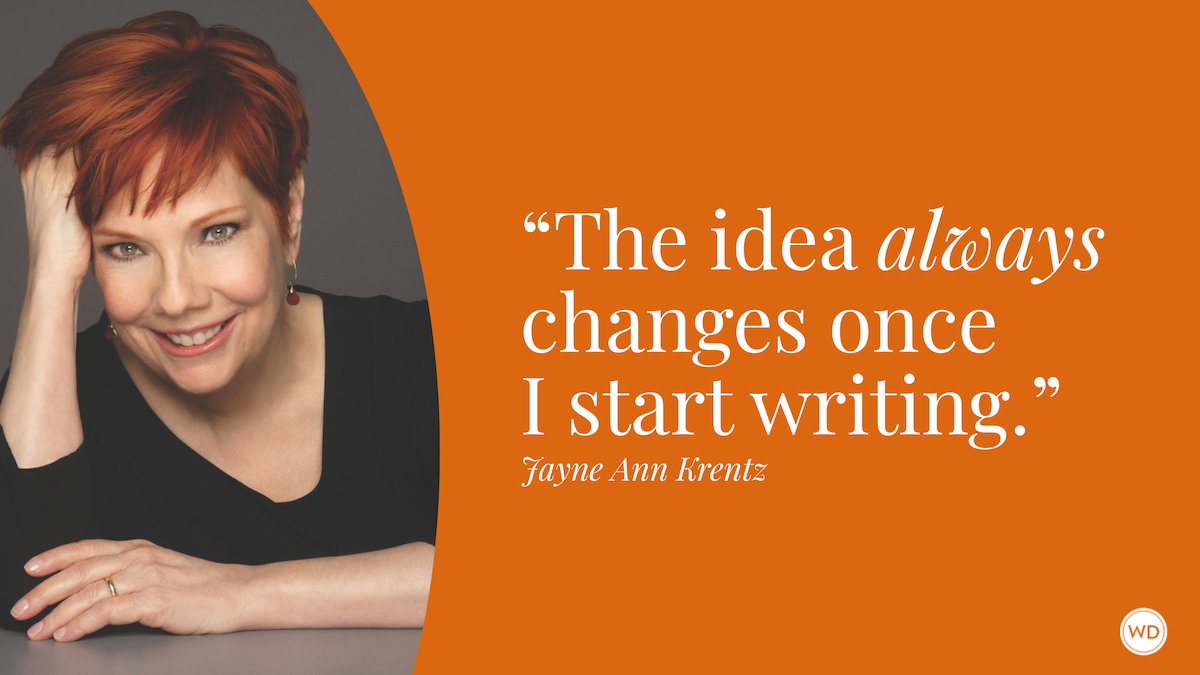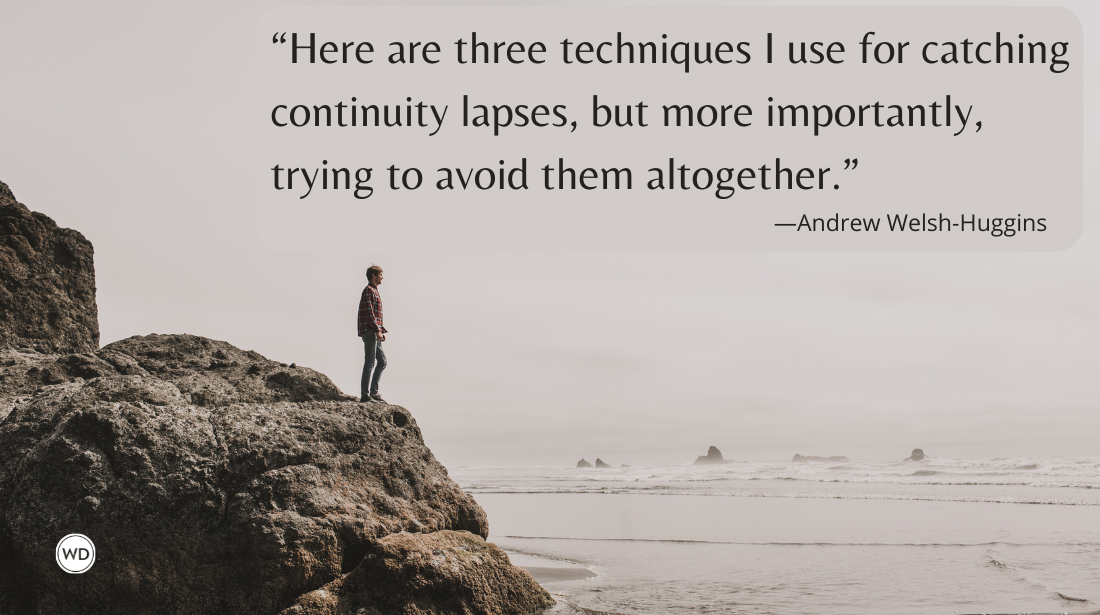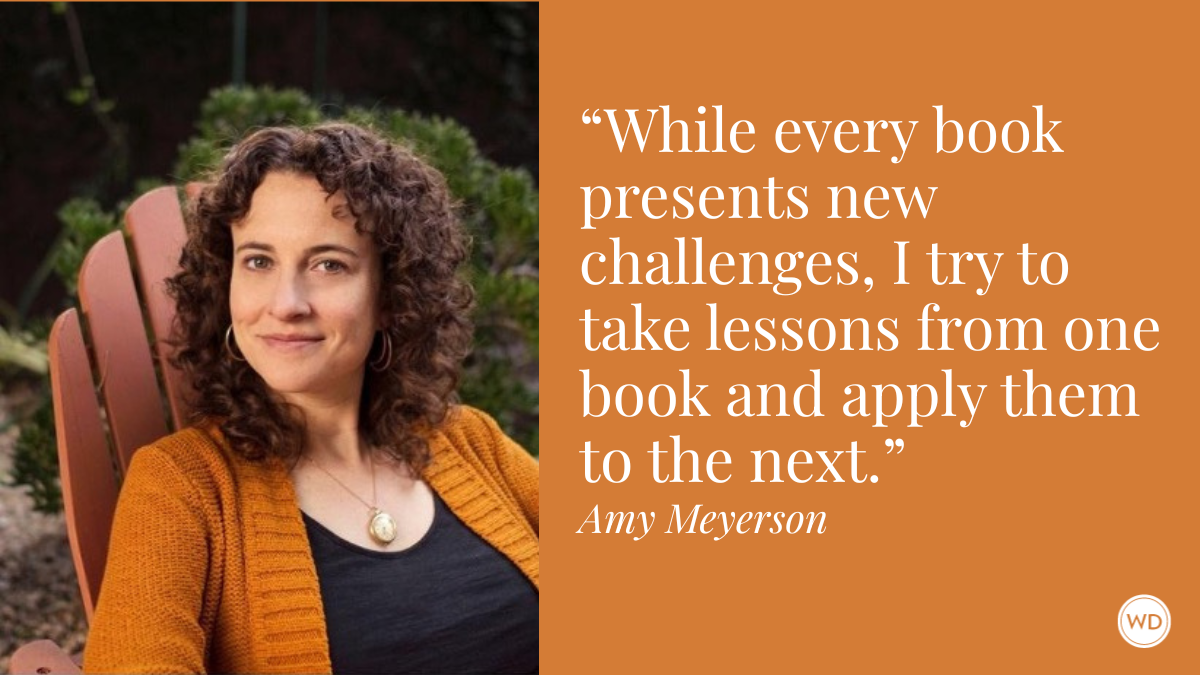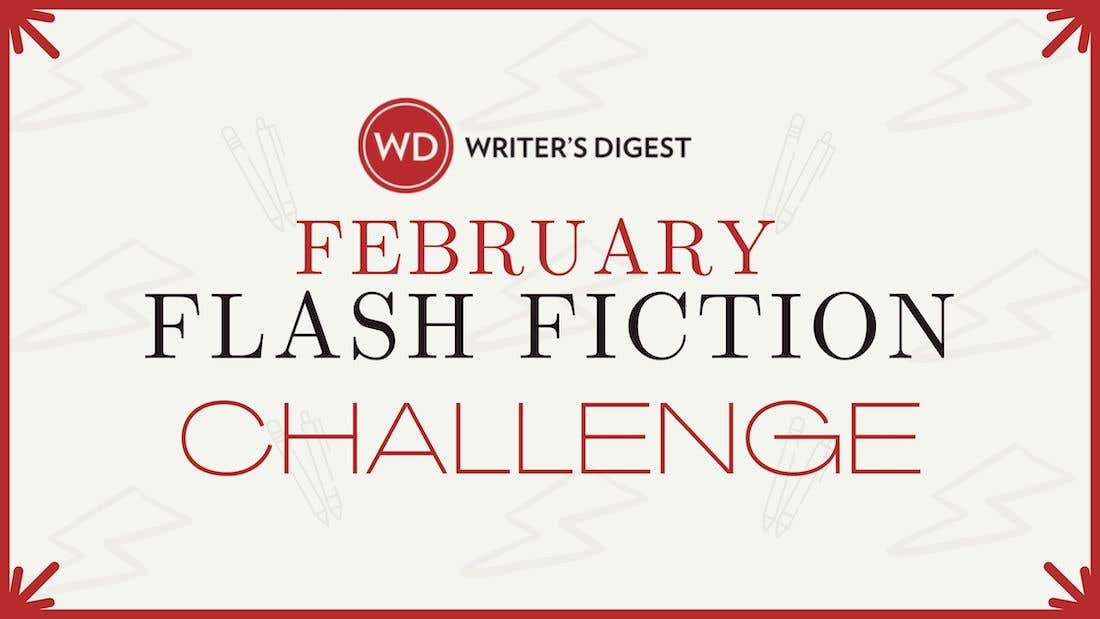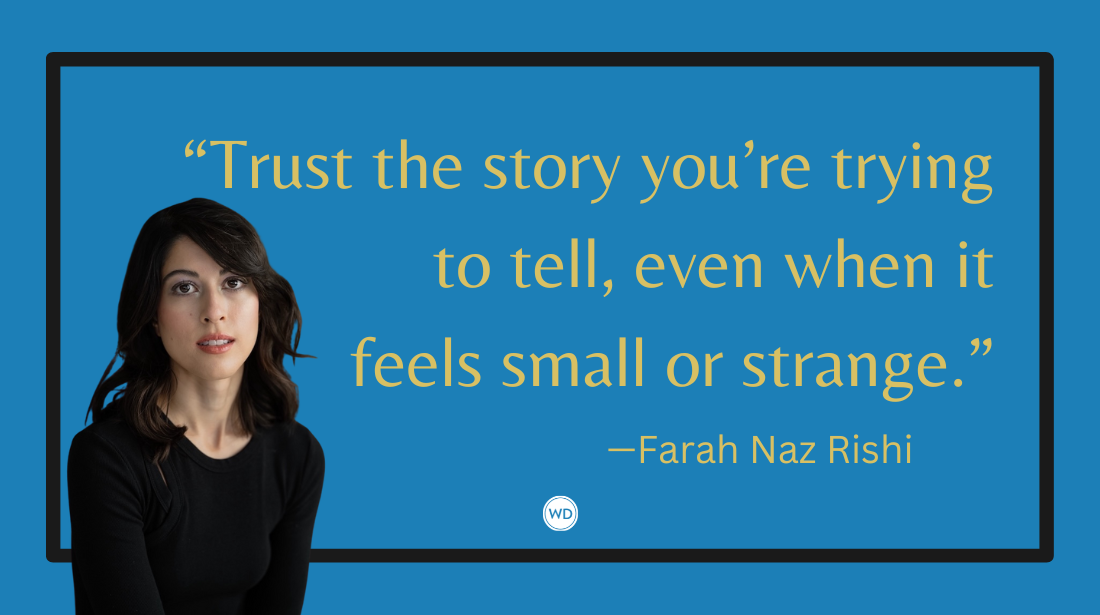Confounding Expectations
Start with the villain for more engaging storytelling.
[This article first appeared in the March/April 2025 issue of Writer's Digest.]
When we think about writing a story, especially in genres like mystery and thriller, our instinct is to begin with the protagonist. We picture their strengths, flaws, and motivations, carefully crafting the character we’ll spend months, or even years, developing. Louise Penny no doubt delved deep into the character of Chief Inspector Armand Gamache—not only his moral integrity but also his love of literature and poetry—before embarking on her beloved series. Lee Child no doubt had a clear sense of Jack Reacher—his defense of the underdog as well as his obsession with coffee—before embarking on that series.
Knowing our protagonists inside and out is crucial, not only for crafting their journey but also for engaging readers. We need to give our protagonists agency, not allowing them merely to be buffeted by the events of the story or by the other characters. We need to ensure that, in the end, the protagonist is the master of their own fate.
But what if we flipped that perspective? What if, instead of starting with our hero, we began with the villain? In an issue focused on confounding expectations, it’s worth exploring how shifting the narrative lens can lead to more engaging and dynamic storytelling.
THE CASE FOR STARTING WITH THE VILLAIN
Focusing exclusively on the protagonist can lead to plot challenges, especially in mysteries and thrillers. In these genres, the protagonist’s actions are often a reaction to the antagonist’s schemes. Gamache won’t investigate a crime that hasn’t been committed; Reacher won’t intervene unless he stumbles upon someone being mistreated by a bad player.
To construct a seamless and believable plot, we must acknowledge that, in many cases, the protagonist is the victim of circumstances created by the villain. Starting the construction of your story from the villain’s perspective ensures that the events the protagonist faces are logical and coherent, avoiding the need to retrofit the antagonist’s actions to match the protagonist’s responses.
For instance, starting a mystery solely from the sleuth’s perspective can lead to narrative pitfalls. In my Ann Kinnear Suspense Novel The Falcon and the Owl, if I had plotted Ann’s actions without first understanding the murderer’s motives and methods, the story would have felt contrived. I might have wanted Ann to explore a hangar at a small general aviation airport where she stumbles upon evidence that implicates airshow pilot Gwen Burridge. But without knowing what crime occurred in the hangar or how it tied into Gwen’s actions, I would have struggled to devise credible evidence for Ann to find. Instead of guiding the narrative naturally, I’d be forcing elements into place, which could lead to implausible scenarios that break the reader’s suspension of disbelief.
Instead, I mapped out the villain’s actions first:
Bryan is working in a hangar when the airport’s owner, Hal arrives, drunk and angry. Hal accuses Bryan of having an affair with Hal’s wife, Gwen, and attacks Bryan. In the ensuing scuffle, Bryan hits Hal in the head with a tool from his workbench, and Hal falls to the ground, unresponsive. Gwen arrives, and she and Bryan perform CPR, but to no avail. They decide that Bryan will fly Hal’s body to a remote area of the Pennsylvania Wilds and bury it. They load Hal’s body into Bryan’s plane.
(This isn’t too much of a spoiler because this scene occurs “on-screen” in the first dozen pages.)
With this scenario established, I don’t have to guess what Ann encounters in the hangar or what directs her suspicions toward Gwen. Because I know that the blow to Hal’s head didn’t break the skin, Ann isn’t going to find blood on the floor. Because I know that the tool used in the attack is part of a set and that Bryan and Gwen decide that removing it from the hangar might raise suspicions, I know that the murder weapon will still be in the hangar. Because a beer bottle was knocked over during the altercation and that Bryan swept up the glass as he and Gwen covered their tracks, it’s unlikely Ann will see broken glass on the floor but possible that she might see a stray shard under the workbench.
By understanding the villain’s actions first, I can ensure that each clue Ann uncovers feels logical and cohesive, grounding the mystery in a believable progression.
Especially in mysteries, starting with the villain’s actions allows you to weave in clues and red herrings more effectively, as you have a clear understanding of what the villain did and didn’t do, knows or doesn’t know, at each stage of the story.
By first understanding the actions your villain takes, the protagonist’s actions and discoveries flow naturally from that groundwork, ensuring that they respond in ways that feel organic and authentic. The villain becomes the engine driving the plot forward, and the protagonist’s actions become meaningful responses to the villain’s moves, creating a dynamic interplay that keeps readers engaged.
Starting with the villain’s perspective allows you to plot a tight, cohesive story, but it also forces you to think deeply about your antagonist as a character, ensuring that they are as engaging as your protagonist.
CRAFTING AN EMPATHETIC VILLAIN
One of my favorite villains in my own work is Louise Mortensen, a doctor whose experiments on Lizzy Ballard’s mother, disguised as fertility treatments, led to Lizzy’s extraordinary abilities. Initially, Louise was merely a plot device to explain Lizzy’s powers, but as I spent more time developing her character, she grew into a fully realized and complex figure.
Louise is a villain because she believes that the ends justify the means, but her goals make her more empathetic. She’s not seeking personal fame or fortune; she’s driven by a desire to advance science. While she does employ henchmen for unsavory tasks, she’s not above doing the dirty work herself, especially when necessary for her goals. However, she never inflicts harm unless she believes it’s unavoidable, as illustrated in this exchange with one of Lizzy’s allies whom she’s holding hostage:
As Louise tightened the bindings, he asked, “Why did you do this? Bringing me the tape to splint my fingers. Letting me use the bathroom.”
“Because,” Louise said, “not doing so served no purpose.”
CREATING A WORTHY ADVERSARY
A great villain must be a worthy adversary for your protagonist. If they are weak or shallow, the hero’s victory will feel inevitable and unearned. If the villain lacks depth, you may have to weaken the hero to maintain balance, which can dull the narrative.
Instead, ensure your villain has clear motivations, a backstory, and a moral code, preventing them from becoming mere caricatures. This will enrich your story and make your villain a formidable obstacle for your protagonist.
In fact, Louise became so compelling to me that she earned her own book, Kill Box Checkmate. But even if a villain doesn’t become the focus of a standalone work, treating them as “the hero of their own story” will make them more fascinating and intensify the conflict for your protagonist.
PROVIDING A FOIL FOR THE HERO
Starting with the villain’s perspective not only strengthens the plot but also allows for a deeper exploration of your protagonist’s character and motivations. The protagonist is not merely solving puzzles or reacting to events but is engaged in a complex dance with the antagonist, where each move and countermove ratchets up the tension.
For instance, even if Ann didn’t suspect Gwen Burridge of involvement in Hal’s death, their fundamental differences would still place them at odds. Both women, as leaders in their respective fields, have contrasting views on professionalism:
“I don’t know why you’re unhappy about someone setting up a YouTube channel about you,” said Gwen. “It shows that your fans appreciate you. You’re a public figure, you owe the public a good show.”
“I’m a professional, not a performer,” said Ann. “I have clients, not an audience.”
“We’re all performers for an audience, some of us are just more comfortable with it than others.”
Gwen’s profession and her philosophy about public visibility underscore the tension between her and Ann. Had Gwen been a corporate CEO or a reclusive artist, the nature of their conflict would have shifted dramatically. Their professional values and how they see their roles in the world serve as a central source of their friction, driving the emotional stakes of the story.
THE BALANCE OF CONTROL
As we’ve discussed, the villain’s actions often catalyze the story, but the protagonist must ultimately be the agent of resolution. For example, in Lee Child’s Jack Reacher novels, Reacher typically stumbles into situations created by the villain. He doesn’t actively seek out wrongs to right; instead, he reacts to injustices that come his way. However, it’s his sense of justice and morality that dictates his responses, and his decisions and actions are what drive the narrative to its conclusion.
Similarly, while Louise Mortensen’s actions are continually upending Lizzy Ballard’s desire for a normal life, it’s Lizzy’s decisions about how to deal with Louise’s interference that shape the course of the story. In fact, as Lizzy matures over the series (starting quite young in the first book), the dynamic shifts—Louise increasingly finds herself reacting to Lizzy’s growing agency and strength. This evolution highlights Lizzy’s transformation from reactive to proactive, a key indicator of her character growth and the story’s progression.
APPLYING THIS APPROACH TO OTHER GENRES
While this method is particularly effective in mysteries and thrillers, it can be adapted to other genres as well. In any story where the protagonist faces external obstacles, understanding the source of those obstacles can help you create a more coherent narrative.
In fantasy, for example, the villain might be a dark sorcerer whose quest for power threatens the protagonist’s world. Understanding the sorcerer’s goals and the steps they take to achieve them will help you create a plot that feels epic and inevitable.
In horror, a well-developed villain transcends typical scare tactics, adding depth and psychological tension to the story. Consider how Psycho would lose its impact without the unnerving complexity of Norman Bates, or how Misery gains its terrifying edge through Annie Wilkes’ fully realized personality, making her unpredictability all the more frightening. These richly crafted villains amplify the stakes, as their personal motives make the danger to the protagonist feel more immediate and unsettling.
In some genres, the antagonist might not even be a character in the traditional sense. In romance, for instance, the “villain” could take the form of societal pressures that keep the lovers apart. By exploring these obstacles in depth—understanding how external factors or internal flaws affect the protagonists—you can craft a love story that feels authentic and emotionally resonant. This approach allows the “villain” to be just as impactful, even if it is not a person but a circumstance or barrier.
CONFOUNDING EXPECTATIONS: CRAFTING STORIES THAT CAPTIVATE
Shifting focus from the protagonist to the villain in the early stages of constructing your story can revolutionize your plotting and character development processes. It prevents awkward narrative adjustments, enriches your antagonist’s character, and ensures that your story remains tight and compelling from start to finish. By balancing the perspectives of both the protagonist and the antagonist, you create a narrative where each character’s actions feel authentic and impactful, driving the story forward in a way that keeps readers hooked until the very last page.
So, as you sit down to plot your next novel, consider confounding your own expectations. Don’t ask yourself what your protagonist will do—ask what your villain has already done, and what they will do next. Embrace the unexpected, and your readers will, too.





